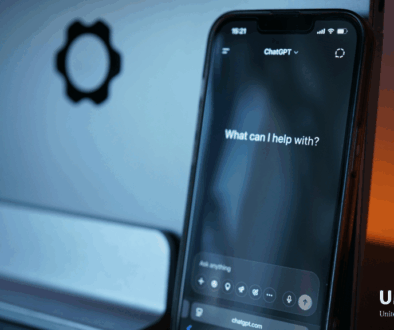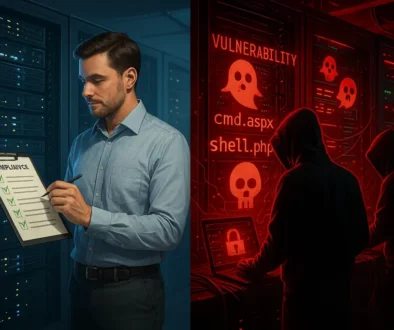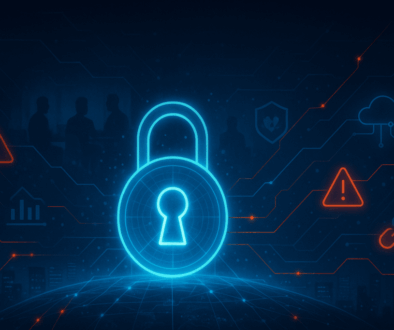Protecting global stadiums and events with Self-Learning AI

This is a guest blog post from our 2022 Secure360 Gold sponsor, Darktrace! Thanks for sharing!
Stadium and large public venue operators are confronted with a unique set of cyber security challenges. Often described as a ‘honeypot’ for cyber-criminals, the entertainment industry is an attractive target for threat actors for three main reasons:
- Hacktivism – as witnessed during the Rio and Tokyo Olympic Games;
- The global stage of international events makes it a target for geopolitically motivated cyber-terrorism;
- The large sums of money at stake make event organizers and associated parties a prime target for financially motivated cyber-crime like ransomware.
The potential ramifications of cyber disruption during a large-scale event cannot be overstated. A momentary lapse in access to power could bring TV broadcasts to a halt; disruption to access controls could restrict fans from entering the grounds; CCTV outages could increase the risk of criminal behavior and physical injuries. If data is not reliable and stadium machines are outputting the wrong metrics, a venue could become dangerously overcrowded. The barrier between the cyber and physical worlds has long dissolved – cyber-attacks threaten human safety.
In this blog, I explore the key challenges of stadium cyber security and explain the unique capabilities of Self-Learning AI that led me to adopt Darktrace as a head of ICT and cyber security for international venues and events.
The access paradox
The biggest challenge lies in the paradox of securing a site where various internal services are provided to a large number of unknown and uncontrolled users, suppliers and devices.
When it’s game time, or ‘D-Day’, you see a huge influx of thousands of people, each with their own devices, needing to connect to your network and your infrastructure. The floodgates are opened. But of course, certain parts of your digital environment need to remain protected: your sensitive employee and customer data, your critical OT systems. I liken this to opening the door to your home, and letting the entire town come in and wander around. But you still need to secure your master bedroom.
A multitude of different actors must be able to work on site to provide services or content during the event. Broadcasters, staff and suppliers need to have access to managing the show, and all of these people need to access or interact with the IT infrastructure. In many ways, these additional bodies are already inside the perimeter and could host unknown malicious threats.
Achieving this balance between accessibility and security requires a shift in mindset from perimeter-based security to one that can detect and respond to threats on the inside. The complexities involved requires technology that can identify malicious behavior in real time based on the wider context of an incident. A particular behavior or connection may be benign in one context and yet critically disruptive in another — tools and technology must be able to discern between the two.
This is why I considered Darktrace’s Self-Learning AI a suitable fit: rather than defending at the perimeter, it focuses on detecting and responding to malicious activity already inside. Because it learns the unique ‘patterns of life’ of its surroundings, it can detect subtle deviations that indicate a threat and initiate a targeted response – without relying on pre-programmed rules and playbooks.
IT/OT convergence
The second key challenge is the issue of IT and OT convergence. Typical stadiums and arenas consist of a wide range of Industrial Control Systems (ICS).

Figure 1: The interconnected IT/OT components of a stadium
This involves a complex and messy array of switches, cables, CCTV cameras, as well as devices and technologies being brought in by the media and the press, and all these IT and OT components are now interconnected, which means these technologies now have Internet Protocol (IP)-based threats to manage.
The same challenges that the corporate infrastructure for stadium management faces in cyber security are therefore also now an issue for ICS security.
This challenge cannot be addressed by viewing IT and OT security in isolation — these two environments are linked because of the analogue migration to IP. A unified approach is required to detect and respond to threats that start in IT before moving to industrial systems. In addition, cyber security technology must be able to deal with complexity.
Darktrace’s AI thrives in the most complex environments, with more data points adding more context to inform the AI’s decision making. It covers OT and IT with a single, unified AI engine, that can also detect and respond across cloud infrastructure, SaaS applications, email systems and endpoints. It is ready to adapt to the messy, interconnected systems that make up large stadiums’ digital infrastructure.
The time factor
Finally, the nature of stadium events means that timing is critical and puts enormous pressure on the organizers and operators. ‘D-Day’ cannot be replayed or postponed, and so if cyber disruption occurs during the event, every minute is crucial.
There is consequently a strong emphasis on two key metrics that will be familiar to the wider audience: Mean Time To Know (MTTK) — how long it takes the security team need to be aware of an incident; and Mean Time To Restore (MTTR) — how quickly a team can act to contain the threat. It is perhaps more imperative in stadium event management than anywhere else that these two metrics be minimized.
This leads to the third criteria in assessing cyber security technology: does it help with response? And critically, can that response be nuanced and targeted, able to contain that threat without causing further disruption?
To this end, Darktrace’s Autonomous Response takes machine-speed action to contain cyber-attacks, when humans are too slow to react or aren’t around at all. It’s powered by Darktrace’s AI, so it has a nuanced and continuously updating understanding of what’s ‘normal’ across IT and OT systems. This means its response actions are targeted: designed to eliminate the threat, but not at the cost of disruption. Depending on the nature and severity of the threat, the technology can block specific malicious connections by enforcing the normal ‘pattern of life’ of a device or account. When every second counts, this is the speed and granularity that you need in a cyber security technology.
Plug and play
For stadiums and large venue operators, Darktrace’s trial period is typically extended for the AI to learn ‘normal’ over a longer period of time, capturing both ‘business as usual’, and ‘event time’. The sophistication of the AI enables it to factor event day into its understanding of ‘normal’.
When event day comes around, the technology has a nuanced understanding of how every user and device typically behaves, and can identify subtle deviations indicative of a threat.
It can be deployed across every area of the digital enterprise – including email, adding an invaluable layer of defense as any new event will entail thousands of email exchanges with new senders to prepare for the event, adding to the propagation risk of viruses or ransomware. It also covers cloud and SaaS environments with the same self-learning approach, stopping anomalous behaviors that point to account takeover and other cloud-based threats.
Wherever it is deployed, Darktrace allows the stadium operator to focus on the vital part of the game and offers real-time protection without any modification in the network topology or infrastructure.
An adaptive defense
Cyber-criminals are constantly developing their approach in an attempt to evade security tools trained to look for specific hallmarks of an attack. As they get creative and continuously experiment with new tactics and techniques, the human operators using these tools are forced into a constant state of catch up.

Figure 2: Cyber security is an evolving game of attack and defense
An AI-based approach that learns an organization from the ground up puts an end to this game of ‘cat and mouse’, shifting the balance in favor of the defenders and allowing them to stay ahead of the threat.
With a nuanced understanding of what’s ‘normal’ for the business, unified IT/OT coverage, and an Autonomous Response solution that takes immediate, targeted action, the playing field is levelled and large stadium and events operators can focus on delivering the best possible experience for attendees, digital viewers, partners and performers.



